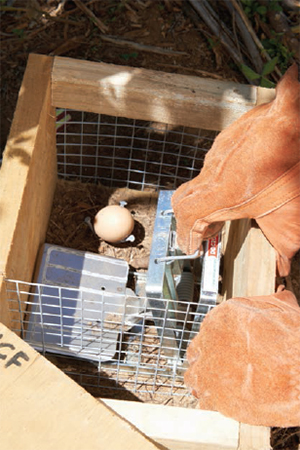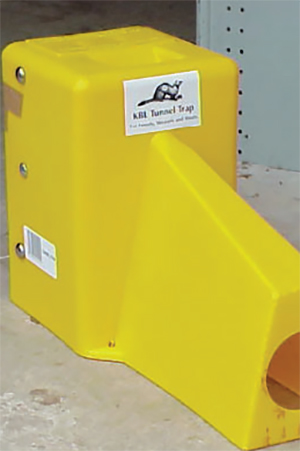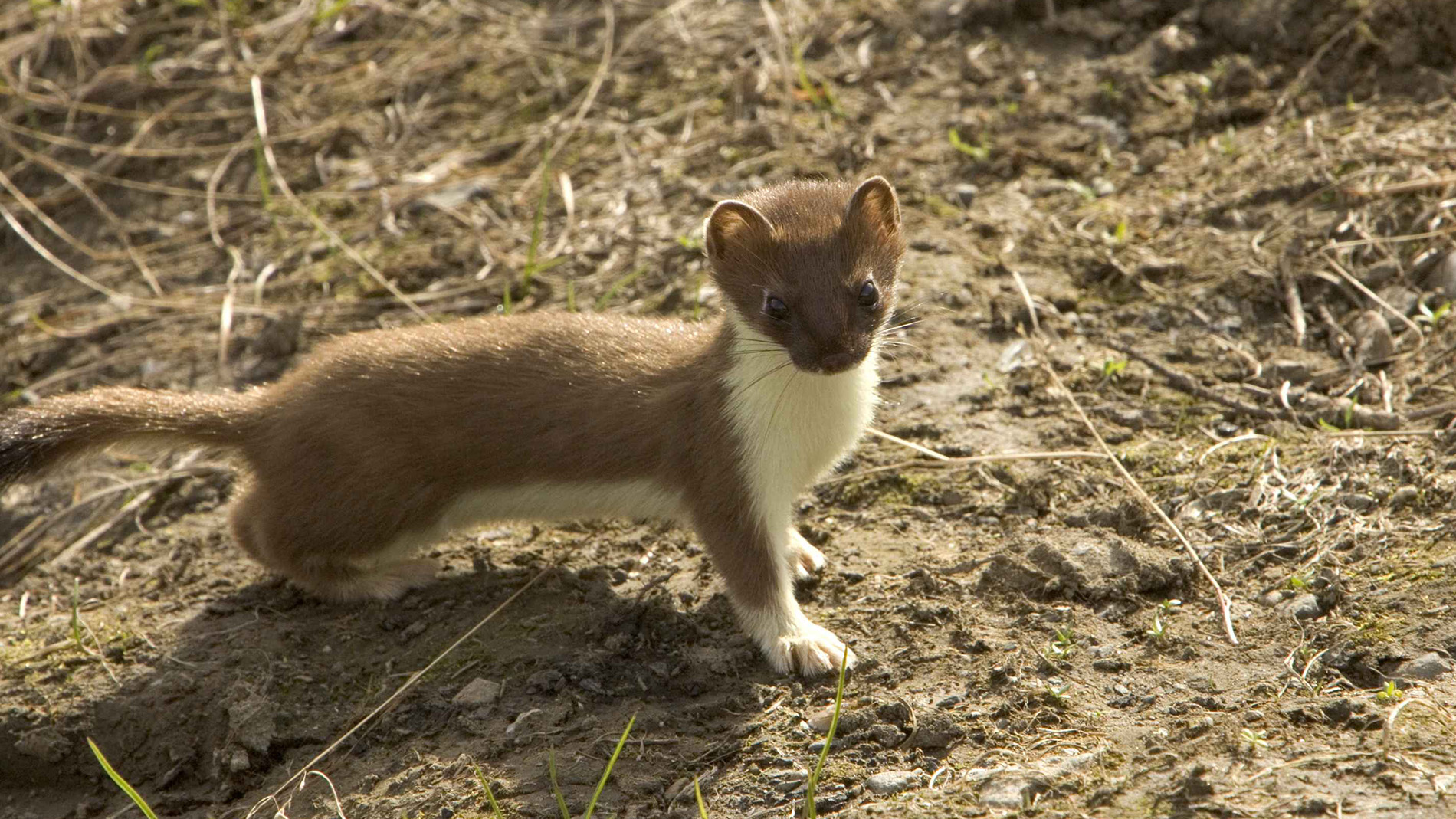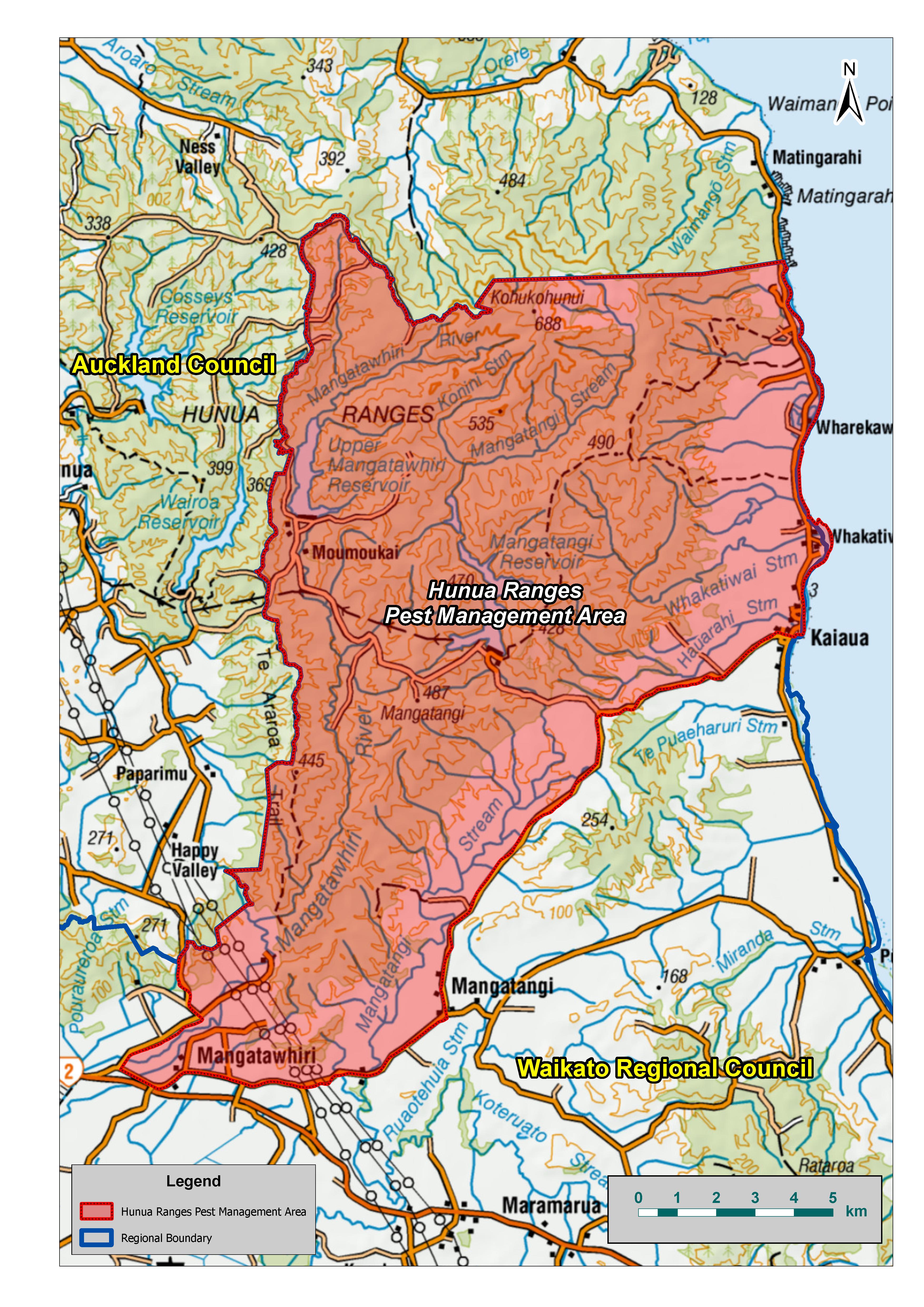| Management programme |
| Site-led (Hūnua Ranges Pest Management Area) |
| Objective |
| Provide advice and information on mustelids (Waikato Regional Council) and reduce their impacts on the values within the Hūnua Ranges Pest Management Area (Auckland Council). |
| Impacts |
| Economic, biodiversity |
Mustelid (Mustelidae) is the family name for a group of carnivorous mammals that includes ferrets, stoats and weasels. Mustelids, originally from Europe, were first introduced in the 1880s to control New Zealand’s growing rabbit plagues. Unfortunately, they had a limited effect on rabbit populations, but they established here and are now the main predator of rodents and birds nationwide.
What do they look like?
Ferrets, stoats and weasels are very cunning animals and good at being not noticed. You are most likely to spot one when it is forced to cross an area of open ground such as a road.
All mustelids have a long body, short legs and a sharp pointed face.
Check out pestdetective.org.nz for good mustelid photos.
Ferrets
- Ferrets are the largest of the mustelid species in New Zealand. Male ferrets grow up to 44cm and females up to 37cm in length.
- The undercoat is creamy yellow with long black guard hairs that give the ferret a dark appearance.
- Legs and tail appear darker than the body.
- The lighter facial region has a dark ‘mask’ around the eyes and across the nose.
Stoats
- Stoats have long, thin bodies and smooth pointed heads.
- They are smaller than ferrets. Males grow up to 30cm and females up to 25cm long.
- Ears are short and rounded.
- Their fur is dark brown with creamy white undercoat.
- Stoats have relatively long tails with a bushy black tip.
Weasels
- Weasels are the smallest and least common mustelid in New Zealand. Males grow to about 20cm.
- Their fur is brown with white undercoat, often broken by brown spots.
- Their tails are short, brown, and tapering.
Why are they pests?
Mustelids are a major threat to the survival of New Zealand’s native birds and animals. Flightless birds (such as kiwi), other ground nesting birds (such as New Zealand dotterel) and birds that nest in holes (such as kākā) are particularly vulnerable. Mustelids are a major threat to chickens being raised on lifestyle blocks and in urban backyards. They will also target pets such as guinea pigs and rabbits. Ferrets can carry bovine tuberculosis (TB) and all mustelids carry parasites and toxoplasmosis, which can cause miscarriages in sheep and illness in humans.
Mustelids are found in a diverse range of habitats including fertile pasture, rough grassland, tussock, scrubland, the fringes of forest fragments and wherever there are high numbers of rabbits. In the Waikato region, ferrets and stoats are more common than weasels (which are quite scarce).
Mustelids’ greatest impact on our native species occurs when their primary prey such as rabbits and rodents become scarce. This is particularly so in relation to their effects on the numbers of kiwi, penguins, wading and perching birds, lizards, and invertebrates. Even in low numbers, mustelids can have a major impact on these animals and our native biodiversity in general.
Checking for signs of mustelids
- Mustelid scats (droppings) are long and thin, often with a characteristic tapering twist at each end. They are filled with fur, feathers and bone fragments (from whatever they have been eating). They are hard and black when dry.
- Mustelids secrete a thick, oily, powerful smelling yellow fluid called musk onto their scats.
- Scats are often placed in conspicuous positions, such as in the middle of a track, as a sign to other mustelids in the area.
- Prey killed by mustelids is usually bloody with chew marks on the back of the head or neck.
- Typically, mustelids move their prey under cover, so often no prey remains are visible.
- Footprints in soft ground (see What Made These Tracks?)
- Mustelids have five toes on each foot, with fur between the pads. Stoat footprints measure approximately 20mm long and 22mm wide (front feet) and 42mm by 25mm (rear feet). Ferrets have the largest footprints of the three mustelid species.
Control methods
Trapping is the best control tool available for mustelids.
Predator Free New Zealand and Bionet have best practice advice on their websites for landowners and community groups on how to undertake mustelid control.
You can also speak to one of our animal pest staff for advice and information on controlling mustelids on freephone 0800 800 401.
KBL tunnel trap/Timms trap
The KBL tunnel trap is very similar to the Timms possum trap but has a tunnel entrance to prevent non-target animals from being caught accidentally. Timms possum traps can be baited with meat or fish to catch mustelids. Before considering this option, ensure that there is no possibility of catching pet cats, as they will probably be attracted to the bait.


Holden Box trap
Box traps are specifically designed for live capture of mustelids. Any non-target animals caught can be released unharmed. These traps can be baited with meat, fish or eggs, however once they are scented by captured animals, baiting is not necessarily needed. By law, live capture traps must be checked within 12 hours of sunrise on the day after which they were set. Live captured animals must be killed humanely by a competent operator.
DOC series of traps
The Department of Conservation (DOC) series of traps – 150, 200 and 250 – are used nationally for predator control. The DOC150 and 200 are suitable for catching stoats and weasels, while the larger DOC 250 can kill larger ferrets as well as stoats and weasels. These traps are easy to use but you need to be fairly strong to set them. They are designed to fit into a wooden cover.
Tips for setting traps
Traps should be placed along a natural ‘runway’. Suitable sites are along fences, hedges, stream banks, in bush among tree roots, beside fallen logs or in dry culverts.
- Traps should be set at around 200m intervals.
- It is preferable to bait traps, though a well-placed trap can still catch mustelids without bait.
- Fishy cat food or freshly killed rabbit or chicken are excellent bait but do not keep well. An egg, whole or broken, salted rabbit or ‘Erayze’ will last longer.
- In time the traps may rust, but if they are painted with ‘Fisholene’ or dipped in hot wax they will last a lifetime. The smell will also help attract mustelids.
- Mustelids are very difficult to catch so don’t expect instant results. Three or four captures per trap in a year is a very good result. If mustelids are avoiding your traps, try leaving the tunnel empty for a time. Even the wariest old adults will get used to running through the tunnel and will be caught when the traps are next set.
- You can also try cutting a section out of the base of the tunnel, so that the traps are set level with the ground. Or try laying scent trails by walking a piece of fish or meat bait on a string from the tunnel out in various directions.
Poison
PredaSTOP (PAPP) containing para-aminopropiophenone is a deadly poison. It is a new generation of toxin which is biodegradable with low toxicity and does not pose a threat of secondary poisoning. A licence is required to store, handle and use this poison. For more information on obtaining a licence contact WorkSafe NZ.
Exclusion fencing
Poultry and pets are best protected by ensuring mustelids cannot access animal enclosures. Ensure enclosures have netting floors or netting walls buried 30 to 45cm below ground level and that the mesh size is small enough that mustelids cannot squeeze through it.
More information and advice
- For more information and advice on mustelids contact Waikato Regional Council on freephone 0800 0800 800 401.
- For more information and advice on mustelids in the Hūnua Ranges Pest Management Area contact Auckland Council on 09 301 0101 or email pestfree@aucklandcouncil.govt.nz.
- Toolkits – Predator Free NZ Trust
- Predator Free 2050 Practical Guide to Trapping
- pestdetective.org.nz/culprits/
- Animal pests and threats A – Z: Threats and impacts (doc.govt.nz)


 Under both the Wild Animal Control Act 1977 and Biosecurity Act 1993, no one is allowed to farm, breed, sell or buy, capture or convey or keep in captivity (for the purposes of farming or breeding) any ferret, stoat or weasel, unless issued a permit or license by the Director General, DOC (WAC Act) and authorised by the Chief Technical Officer of the Ministry for Primary Industries (MPI) (Biosecurity Act).
Under both the Wild Animal Control Act 1977 and Biosecurity Act 1993, no one is allowed to farm, breed, sell or buy, capture or convey or keep in captivity (for the purposes of farming or breeding) any ferret, stoat or weasel, unless issued a permit or license by the Director General, DOC (WAC Act) and authorised by the Chief Technical Officer of the Ministry for Primary Industries (MPI) (Biosecurity Act).


To ask for help or report a problem, contact us
Tell us how we can improve the information on this page. (optional)